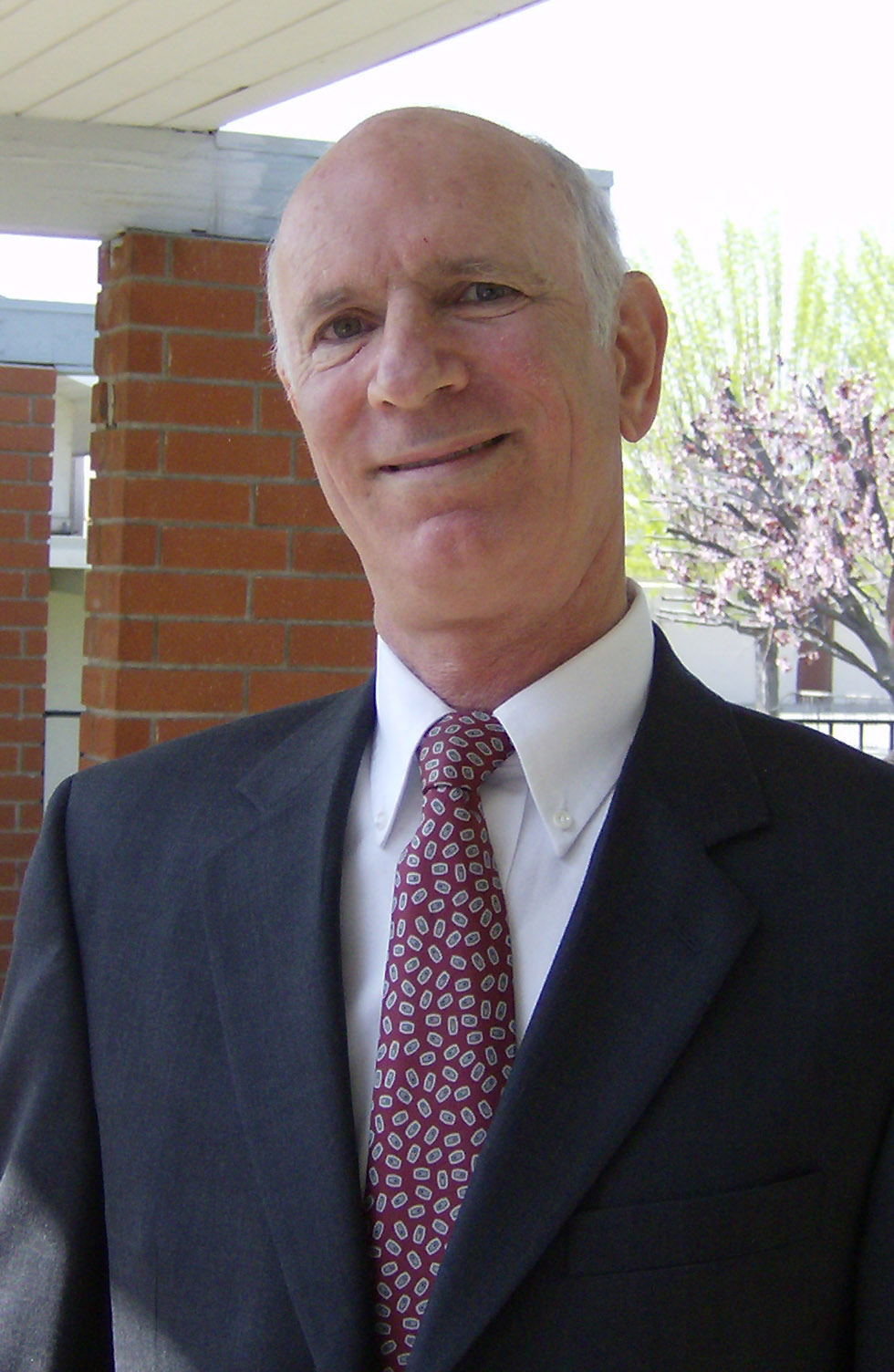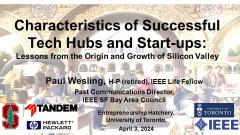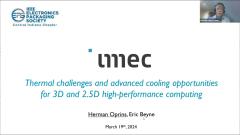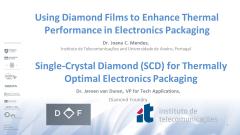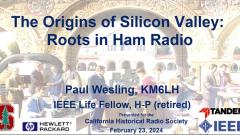(48:50 + Q&A) Paul Wesling KM6LH, IEEE Life Fellow and Distinguished Lecturer for the Electronics Packaging Society (retired from H-P/Tandem) with commentary by guest Steve (Woz) Wozniak.
– early 20th century, angel investments, tech development, new management practices, where innovation happens today ...
This talk focuses on the contributions of amateur radio to the development of a climate of innovation and collaboration in what has become Silicon Valley. Another version of this DL talk, on Stanford's YouTube channel: https://goo.gl/cSdSUH
Why did Silicon Valley come into being? The story goes back to local Hams (amateur radio operators) trying to break RCA's tube patents, “angel” investors, the sinking of the Titanic, Fred Terman and Stanford University, local invention of high-power tubes, WW II and radar, William Shockley's mother living in Palo Alto, and the SF Bay Area infrastructure that developed – these factors pretty much determined that the semiconductor and IC industries would be located in California’s Santa Clara Valley, and that the Valley would remain the world’s innovation center as new technologies emerged – computers, then software, mobile, biotech, Big Data, VR/AR, autonomous vehicles – and it would become the model for innovation worldwide.
David Packard says, "… the most critical parts were my trip [from G.E., on the East Coast] to Palo Alto and my involvement in ham radio. If it hadn’t been for those two things, the Hewlett-Packard Company would never have come about."
Paul Wesling, an IEEE Life Fellow and Distinguished Lecturer, has observed the Valley for decades as an engineer, executive, resident, and educator, and has presented this talk world-wide. In this non-technical presentation, he gives an exciting and colorful history of device technology development and innovation that began in Palo Alto, then spread across the Santa Clara Valley during and following World War II. You'll meet some of the colorful characters – Cyril Elwell, Leonard Fuller, Lee de Forest, Bill Eitel W6UF, Charles Litton 6AO, Fred Terman 6AE/W6DI, David Packard 9DRV, Bill Hewlett, Russ Varian and others – extending to Nolan Bushnell W7DUK and Steve Wozniak WA6BND – who came to define the worldwide electronics industries through their inventions and process development.
Paul (KM6LH) received degrees in electrical engineering and materials science from Stanford University, then worked locally at companies including Lenkurt Electric, Sperry-Univac, and Amdahl, joining Tandem Computers in Cupertino in 1985. Paul retired from HP in 2001, then served as “Mr. IEEE” for the San Francisco Bay Area for 10 years. He is a Life Fellow of the IEEE. He received the IEEE’s Centennial Medal, the Board's Distinguished Service award, the Society Contribution Award, the IEEE's Third Millennium Medal, and the EPS Society’s Presidential Recognition Award. He edits the IEEE/ASME/SEMI Heterogeneous Integration Roadmap for prediction of technology directions in electronics packaging.
(48:50 + Q&A) Paul Wesling KM6LH, IEEE Life Fellow and Distinguished Lecturer for the Electronics Packaging Society (retired from H-P/Tandem) with commentary by guest Steve (Woz) Wozniak.
– early 20th century, angel investments, tech development, new management practices, where innovation happens today ...
This talk focuses on the contributions of amateur radio to the development of a climate of innovation and collaboration in what has become Silicon Valley. Another version of this DL talk, on Stanford's YouTube channel: https://goo.gl/cSdSUH
Why did Silicon Valley come into being? The story goes back to local Hams (amateur radio operators) trying to break RCA's tube patents, “angel” investors, the sinking of the Titanic, Fred Terman and Stanford University, local invention of high-power tubes, WW II and radar, William Shockley's mother living in Palo Alto, and the SF Bay Area infrastructure that developed – these factors ...
 Cart
Cart Create Account
Create Account Sign In
Sign In
